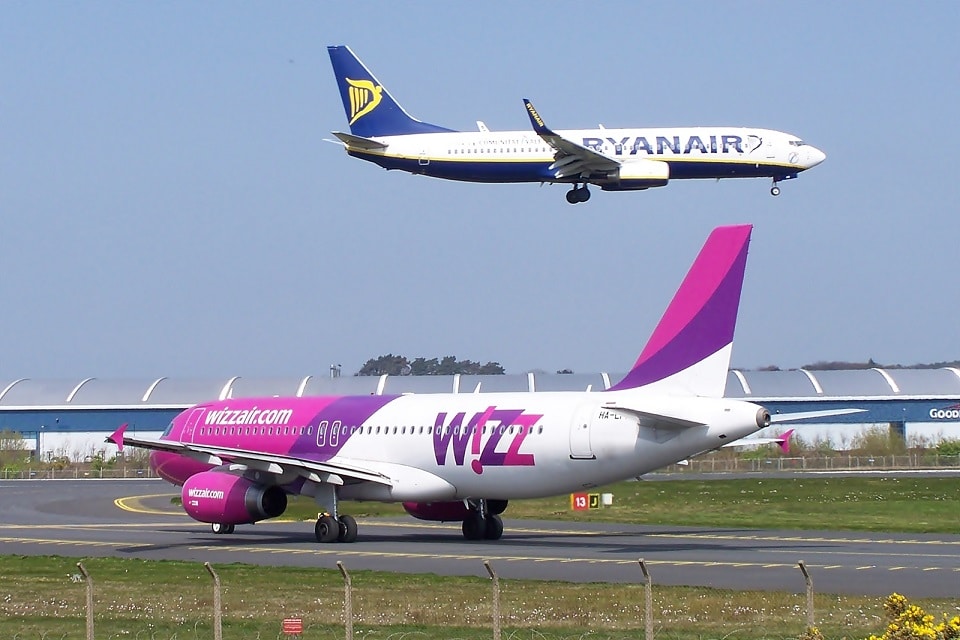Airlines
How low-cost airlines provide cheap flight tickets

Low-cost airlines have revolutionized the airline industry by providing affordable air travel options to a wide range of passengers. These airlines, also known as budget or no-frills carriers, operate on a business model that focuses on minimizing operating costs while still offering reasonably priced flights. Here are some typical methods used by low-cost airlines:
World’s Best Low-Cost Airlines 2022(Opens in a new browser tab)
- No-frills service: Low-cost airlines often provide a basic or no-frills service, concentrating on giving passengers the necessities of air travel without any extras. This indicates that they frequently do not offer amenities like free meals, in-flight entertainment, or prior seat selection. These extras can be removed to cut costs.
- Point-to-point routes: Instead of the hub-and-spoke patterns utilized by regular carriers, low-cost airlines often fly point-to-point routes. As a result, there is no need for connecting flights as passengers are transported straight between well-known locations. They can serve routes with high demand more effectively and their operational costs were decreased.
- Secondary airports: Secondary airports outside of major cities are frequently used by low-cost airlines. Compared to primary airports, these airports typically charge cheaper landing fees and have lesser operating expenses. Although they may be farther from the city center, low-cost carriers can pass on these cost savings to passengers in the form of cheaper fares.
- High aircraft utilization: By keeping its aircraft in the air for extended periods of time, low-cost airlines seek to maximize the utilization of their fleet. They accomplish this by speeding up airport turnaround times, cutting down on layover time, and adding more flights per day for each aircraft. The fixed costs are distributed over a greater number of flights and passengers through to this effective utilization of resources.
- Simplified fleet:A standardized fleet of aircraft models is frequently used by low-cost airlines. This lowers costs by streamlining operational, maintenance, and training processes. With fewer additional spare parts and specialized training requirements, it enables them to negotiate better terms with aircraft manufacturers.
- Online bookings and cost-cutting measures: Low-cost airlines largely rely on online reservations to avoid paying for call centres or travel agencies. Additionally, they employ a number of cost-cutting strategies across all aspects of their business, including lowering staffing levels, maximising fuel efficiency, and streamlining administrative procedures.
- Ancillary revenue: By providing add-on services and collecting fees for them, low-cost airlines generate additional revenue. Onboard sales, priority boarding, seat selection fees, baggage fees, and other charges are a few examples. They maintain low base tariffs while making money from ancillary services by unbundling services and letting customers select only the services they require.
Low-cost airlines can save money by combining these strategies, which they can pass on to passengers by reducing ticket prices. Before making a reservation, travelers should carefully read the terms and conditions as extra charges for services and facilities beyond the basic fare may apply.

Airlines
Air India to Launch aircraft maintenance training institute in Bengaluru

Air India, one of India’s leading global airlines, is set to establish a Basic Maintenance Training Organization (BMTO) in Bengaluru.
This institute will offer a comprehensive Aircraft Maintenance Engineering (AME) program certified by the Directorate General of Civil Aviation (DGCA). The program will follow an integrated 2+2 year structure, combining classroom learning with practical, hands-on training.
This initiative is part of Air India’s broader goal of creating a robust aviation ecosystem in India. With plans to expand its fleet and strengthen its operations, the airline aims to build a skilled workforce of maintenance engineers, making the organization self-reliant while supporting its ambitious transformation journey.
This country tops visa rejections in the popular Schengen countries
To bring this vision to life, air india has partnered with Bengaluru Airport City Limited (BACL), a subsidiary of Bangalore International Airport Limited (BIAL). Together, they will develop a state-of-the-art facility spanning 86,000 square feet at Bengaluru Airport City.
This purpose-built campus will feature modern classrooms, well-equipped laboratories, and qualified trainers to deliver world-class education and training. The institute is expected to become operational by mid-2026.
The BMTO will be located close to Air India’s new 12-bay Maintenance, Repair, and Overhaul (MRO) facility, also set to open in Bengaluru by early 2026. The AME program will begin with two years of academic coursework, followed by two years of practical training at the MRO, ensuring students receive hands-on experience adhering to industry standards.
Sanctions & Engine Issues Ground Half of Russia’s A320neo fleet
In the meantime, Air India has introduced a Cadet AME program in collaboration with reputable institutions in Bengaluru and Hyderabad.
This ensures continuity in its commitment to developing skilled aircraft maintenance engineers while the BMTO facility is under construction. The program also allows students to pursue a bachelor’s degree through university partnerships, enhancing their career and academic opportunities.
With this initiative, air india plane aims to address the growing demand for skilled professionals in aircraft maintenance and engineering, air india new planes contributing to the development of India’s aviation sector and creating specialized career paths for aspiring engineers.
-

 Aviation2 months ago
Aviation2 months agoMicrosoft Flight Simulator Raises $3 Million to Bring Back the An-225 Mriya
-

 Airlines2 months ago
Airlines2 months agoQatar Citizens Can Travel to the United States Without a Visa
-

 Aviation2 months ago
Aviation2 months agoQatar Airways bans these new Electronic Devices on plane
-

 Airlines2 months ago
Airlines2 months agoJapan Airlines Rolls Out Free Domestic Flights to International Passengers
-

 Defence2 months ago
Defence2 months agoWhich Country Has the Largest Fleet of Fighter Aircraft?
-

 Airport2 months ago
Airport2 months agoWestern Sydney Airport Welcomes Its First Plane After 6 Years of construction
-

 Travel2 months ago
Travel2 months agoQatar Airways Launches Four Additional Flights from Amsterdam
-

 Aviation2 months ago
Aviation2 months agoDid you know ? Once Boeing 747 carried 1088 passenger in 1991








